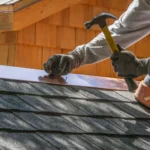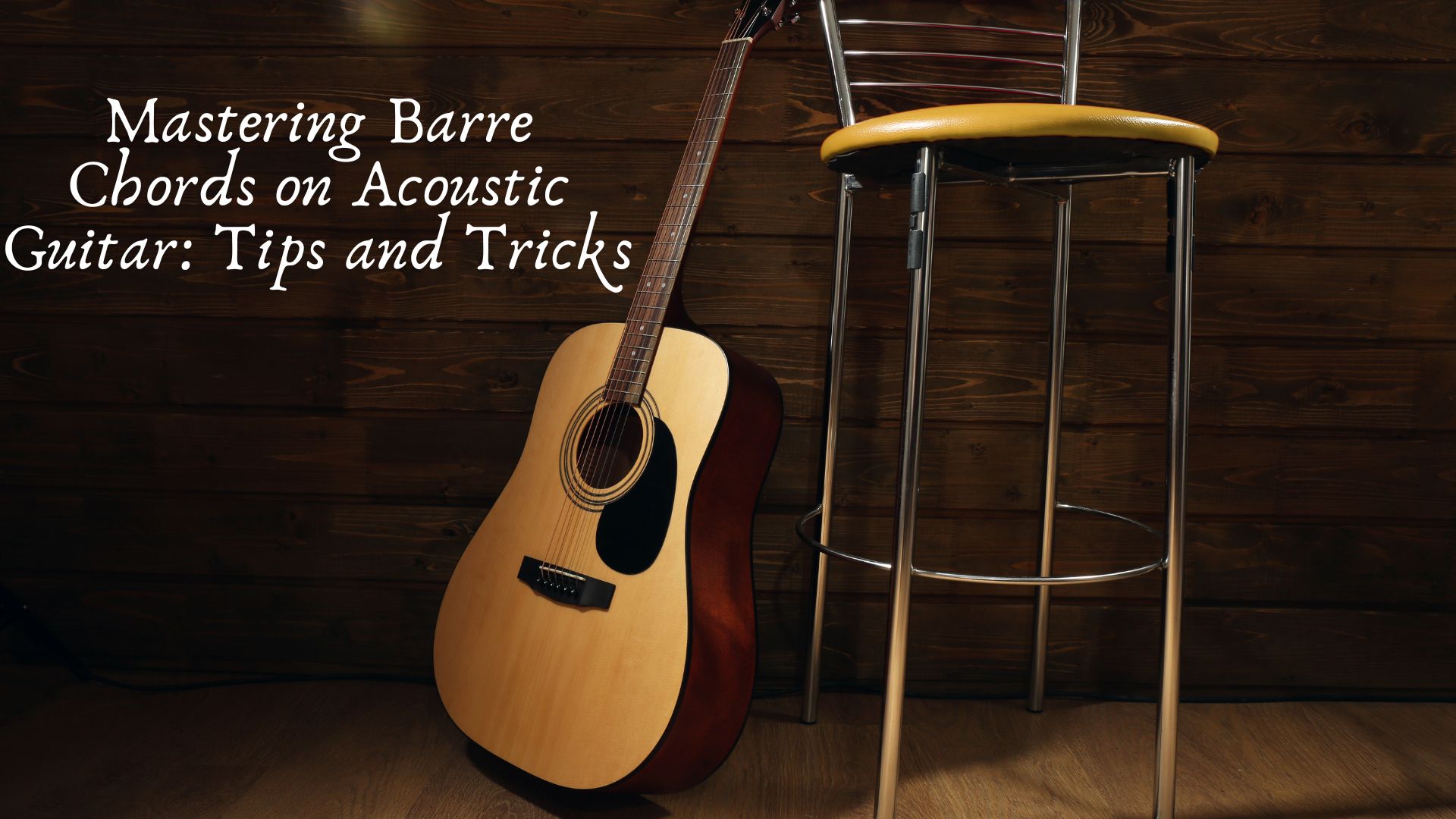Barre chords are a vital aspect of learning to play the acoustic guitar. These chords allow guitarists to play in any key, unlock various musical possibilities, and play a wide range of songs across multiple genres. However, mastering barre chords can be challenging, especially for beginners. The technique requires a combination of finger strength, precision, and muscle memory, making it a crucial skill to develop for any guitarist. In this article, we will explore essential tips and tricks to help you master barre chords and elevate your playing.
Understanding Barre Chords
Before diving into the tips and tricks, let’s take a moment to understand what barre chords are and why they’re important. A barre chord involves pressing down multiple strings across a single fret with one finger (typically your index finger), creating a “bar” that acts as a capo. The other fingers then form the shape of the chord (often resembling open chords like E major or A major) higher up the neck.
This allows you to play chords that are not limited to the open position, enabling you to play in different keys and positions without needing to rely on open strings.
Common Barre Chord Shapes
There are a few essential barre chord shapes that every guitarist should know. These include:
- F Major Shape (Root on the Low E string): One of the most common barre chord shapes, this shape involves barring all six strings with your index finger and shaping your remaining fingers to form an E major chord.
- B Minor Shape (Root on the A string): In this shape, you bar the strings at a specific fret and form a minor chord with your remaining fingers. It’s used frequently in many songs.
- A Major Shape (Root on the A string): Similar to the B minor shape but with a major chord.
Tip #1: Build Finger Strength and Endurance
The biggest challenge with barre chords is finger strength. Your index finger must press down on all the strings, while the rest of your fingers play the usual chord shapes. To build the necessary strength and stamina, practice pressing down on your index finger and holding the bar for a few seconds. Start by barring just the top few strings and gradually work your way down to the full six-string barre.
Try exercises such as:
- Pressing down each string individually to ensure you’re barring evenly across the fretboard.
- Practicing on a single string at a time (e.g., barre the 6th string first, then the 5th string) to get used to the finger pressure required.
Tip #2: Proper Finger Placement
The key to clean-sounding barre chords lies in finger placement. It’s easy for the bar to sound muffled if your index finger is too flat or not positioned properly. Try the following:
- Position your index finger closer to the fret, not directly on it, but just slightly behind it. This will help avoid buzzing sounds.
- Angle your finger slightly so that it presses the strings with the fleshy part of your finger, not the pad. The angle of your finger should be such that the pressure is distributed evenly across the strings.
- Make sure the other fingers are pressing down firmly on the strings without touching or muting them.
Tip #3: Use Proper Thumb Position
Many guitarists struggle with barre chords because of improper thumb positioning. Your thumb should be placed behind the neck, pointing upwards towards the ceiling, in a comfortable and relaxed position. It should act as a counterpoint to your index finger, providing the necessary support to press down the strings.
To avoid unnecessary tension, try not to grip the neck too tightly. You want your thumb to help with the pressure without straining your hand.
Tip #4: Start Slowly, Then Increase Speed
Barre chords can feel awkward at first, so don’t rush through them. Start by practicing slow and controlled chord transitions. Take the time to place your fingers in the correct position and press down each string firmly.
Once you’re comfortable with the chord shape and placement, gradually increase your speed and move between barre chords and open chords. Try incorporating barre chords into simple progressions, and then build up to more complex chord changes as you gain confidence.
Tip #5: Strengthen Your Fretting Hand
The more control you have over your fretting hand, the more precise your barre chords will be. One way to strengthen your fretting hand is by incorporating finger exercises into your practice routine. Simple exercises like finger stretches and scales help build dexterity and flexibility, which are essential when mastering barre chords.
- Try practicing chromatic scales to develop finger independence.
- Practice scales and arpeggios using barre chords to train your fingers in various positions.
Tip #6: Use the Right Guitar Setup
An often-overlooked aspect of barre chord playing is the guitar setup. If your guitar’s action (the distance between the strings and fretboard) is too high, it can make pressing down the strings harder and more painful. If you’re having trouble with barre chords despite following proper technique, consider getting your guitar set up by a professional to adjust the action.
Additionally, the string gauge (thickness of the strings) can affect how easily you can play barre chords. Lighter gauge strings (such as 8-38 or 9-42 sets) may be easier on your fingers when starting, but as you progress, you may want to experiment with heavier gauge strings for more tone and better sustain.
Tip #7: Practice with Real Songs
One of the best ways to master barre chords is by applying them in musical contexts. Choose songs that feature barre chords, and practice playing along with them. This not only reinforces muscle memory but also improves your ability to transition between barre chords and open chords seamlessly.
Here are a few beginner-friendly songs that use barre chords:
- “Wonderwall” by Oasis
- “Knocking on Heaven’s Door” by Bob Dylan
- “Hotel California” by Eagles
Tip #8: Don’t Be Discouraged by Pain or Frustration
It’s natural for your hand to hurt in the beginning as you’re building strength and muscle memory. However, if you experience any discomfort beyond the usual soreness, take a break. Over time, the pain will subside as your fingers adjust to the pressure needed for barre chords.
Remember that mastery takes time and persistence, so don’t let initial frustration deter you from practicing.
Conclusion
Mastering barre chords is an essential skill for any guitarist, but it’s not without its challenges. By focusing on building finger strength, proper finger placement, and consistent practice, you can overcome the obstacles of barre chords and open up a whole new world of musical possibilities. Whether you’re playing in different keys, experimenting with new chord progressions, or tackling your favorite songs, barre chords are a crucial tool in your guitar-playing arsenal.
With patience, practice, and the right techniques, you’ll soon be able to master barre chords and unlock the full potential of your acoustic guitar. Keep practicing, stay persistent, and let the music flow!










